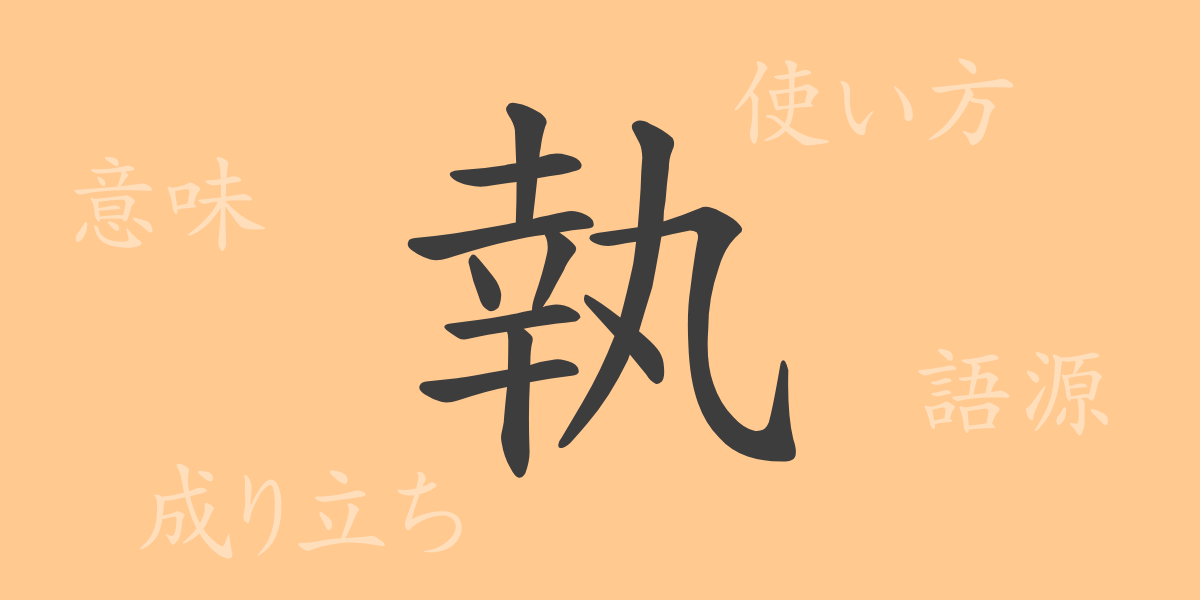Language is a treasure trove of culture and history. The meaning embedded in each character reflects the thoughts and values of a nation. The common Japanese kanji “執(しつ)” is no exception. In this article, we delve into the origins, meanings, usages, and idioms associated with “執(しつ),” revealing its charm. Through this single kanji, feel the depth of language.
Origins of 執 (Etymology)
The kanji “執(しつ)” originates from ancient China, formed from the concept of “grasping something round with the hand.” It combines “扌(て)” (hand) symbolizing a hand grasping something, and “丸(まる)” (a shape resembling soil) representing soil. This character’s meanings of “grasp” and “persist” are evident from its formation.
Meanings and Usage of 執
“執(しつ)” means “to grasp,” “to persist,” or “to cling to.” It describes a state where one’s actions or thoughts firmly hold onto something or are deeply fixated. For example, “執念(しゅうねん)” means “a strong will to achieve something.”
Readings, Stroke Count, and Radical of 執
Understanding the readings and structure of “執(しつ)” is essential as it is a common kanji in Japanese.
- Readings: The on’yomi (音読み) is “シツ,” and the kun’yomi (訓読み) is “と(る).”
- Stroke count: 11 strokes.
- Radical: The radical is 土部(つちへん).
Idioms, Phrases, and Proverbs Using 執
There are various idioms, phrases, and proverbs in Japanese that include “執(しつ).” For example, “執筆(しっぴつ)” means “writing,” and from this, the term “執筆活動(しっぴつかつどう)” meaning “writing as a profession” is derived. “執行(しっこう)” means “to execute orders or plans” and is frequently used in legal contexts. Additionally, the proverb “一意専心(いちいせんしん)” implies concentrating on one thing, reflecting the same concept as “執(しつ).”
Conclusion on 執
This article explored various aspects of the kanji “執(しつ).” From its etymology, meanings, and usages to idioms, we examined the rich expressiveness and wide range of applications of this single character. The use of kanji in Japanese transcends mere communication, playing a vital role in conveying cultural background and emotions. By understanding the history and meanings embedded in kanji like “執(しつ),” you can deepen your appreciation and understanding of the language.

























